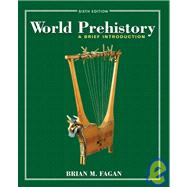
| Prehistory | |
| Introducing World Prehistory | |
| The World of the First Humans | |
| Human Origins | |
| African Exodus | |
| The Birth of the Modern World | |
| Diaspora | |
| The Origins of Food Production | |
| The Earliest Farmers | |
| Chiefs and Chiefdoms | |
| Early Civilizations | |
| State-Organized Societies | |
| Mesopotamia and the Eastern Mediterranean World | |
| Egyptand Africa | |
| South, Southeast, and East Asia | |
| Lowland Mesoamerica | |
| Highland Mesoamerica | |
| Andean Civilizations | |
| Table of Contents provided by Publisher. All Rights Reserved. |
The New copy of this book will include any supplemental materials advertised. Please check the title of the book to determine if it should include any access cards, study guides, lab manuals, CDs, etc.
The Used, Rental and eBook copies of this book are not guaranteed to include any supplemental materials. Typically, only the book itself is included. This is true even if the title states it includes any access cards, study guides, lab manuals, CDs, etc.